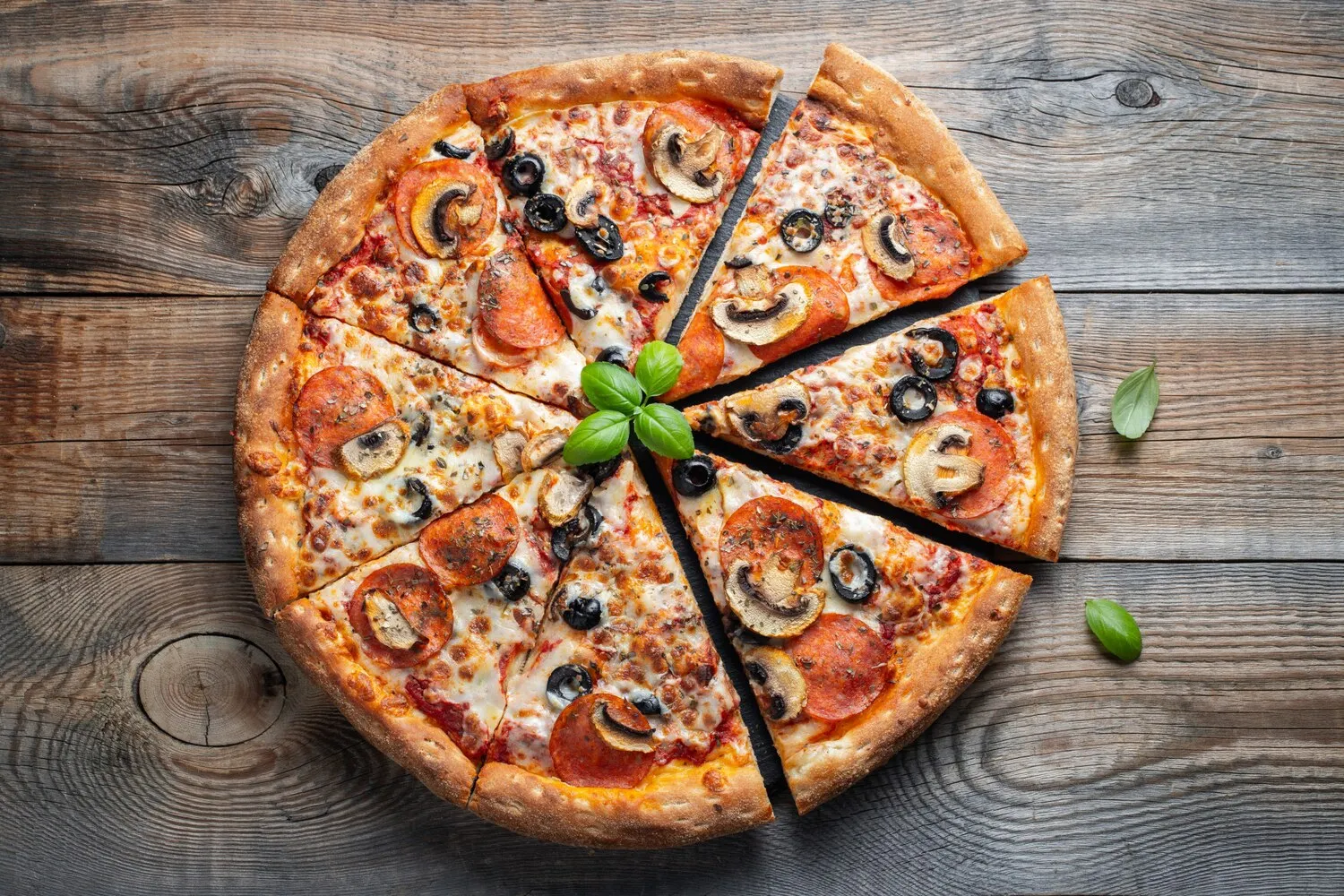
Pizza
Blanco's is known for its pizza options.
Nutrition Facts
* The % Daily Value (DV) tells you how much a nutrient in a serving of food contributes to a daily diet. 2,000 calories a day is used for general nutrition advice.
Blanco's
Pizza's origins can be traced back to ancient civilizations, with flatbreads enjoyed in various forms across the Mediterranean. The modern pizza as we know it emerged in Naples, Italy, in the 18th or early 19th century as a simple, affordable food for the working class.
Pizza is more than just a food; it's a cultural icon, deeply embedded in Italian identity and globally recognized as a symbol of comfort, community, and celebration.
Family and Sharing
Pizza is often shared amongst family and friends, fostering a sense of togetherness and conviviality.
Regional Variations
Different regions of Italy boast unique pizza styles, reflecting local ingredients and culinary traditions. For example, Neapolitan pizza is known for its thin, soft crust and simple toppings, while Roman pizza often features a crispier, thinner crust.
Global Adaptation
Pizza has been adapted and modified around the world, with variations incorporating local flavors and ingredients. This has led to a diverse range of pizza styles, reflecting the cultural diversity of the regions where it is consumed.
Pizza's flavors are a symphony of savory, tangy, and sometimes sweet elements, primarily derived from the interplay of the crust, sauce, cheese, and toppings.
The crust provides a base flavor, often yeasty and slightly nutty, with variations depending on the type (thin crust, deep dish, etc.). Tomato sauce adds acidity and sweetness, often seasoned with herbs like oregano, basil, and garlic. Mozzarella cheese contributes a creamy, milky flavor and a satisfying stretch. Toppings offer diverse flavor profiles, ranging from the salty and savory of pepperoni and sausage to the earthy notes of mushrooms and peppers, and the herbaceousness of fresh basil.
Dough Matters
Use high-quality flour and allow the dough to rise properly for optimal flavor and texture. Cold fermentation can enhance the flavor development of the dough.
Oven Temperature is Key
A high oven temperature is crucial for achieving a crispy crust and melting the cheese evenly. Use a pizza stone or steel to help retain heat.
Less is More
Avoid overloading the pizza with toppings, as this can result in a soggy crust. Focus on using fresh, high-quality ingredients and balancing flavors.
Explore additional Pizza dishes and restaurants
Explore PizzaDiscover top dining spots and culinary experiences in Vitória da Conquista.
Explore Vitória da ConquistaLearn more about the food culture, restaurant scene, and culinary heritage of Brazil.
Explore Brazil